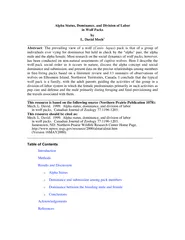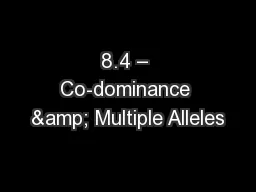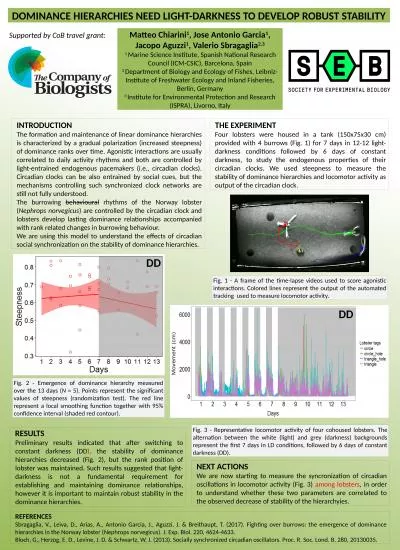PDF-Alpha Status Dominance and Division of Labor in Wolf P
Author : natalia-silvester | Published Date : 2015-06-03
David Mech Abstract The prevailing view of a wolf Canis lupus pack is that of a group of individuals ever vying for dominance but held in check by the alpha pair
Presentation Embed Code
Download Presentation
Download Presentation The PPT/PDF document "Alpha Status Dominance and Division of L..." is the property of its rightful owner. Permission is granted to download and print the materials on this website for personal, non-commercial use only, and to display it on your personal computer provided you do not modify the materials and that you retain all copyright notices contained in the materials. By downloading content from our website, you accept the terms of this agreement.
Alpha Status Dominance and Division of Labor in Wolf P: Transcript
Download Rules Of Document
"Alpha Status Dominance and Division of Labor in Wolf P"The content belongs to its owner. You may download and print it for personal use, without modification, and keep all copyright notices. By downloading, you agree to these terms.
Related Documents














